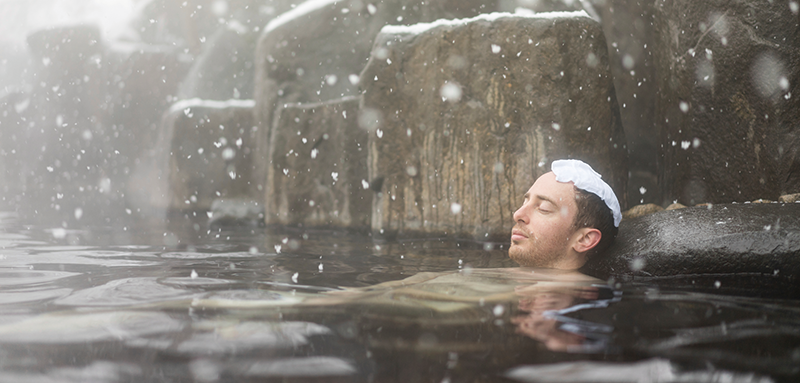By Matt Klampert
During the winter season, travelers from both within Japan and around the world grab the bullet trains to Echigo-Yuzawa station in order to have convenient access to many of the nearby ski resorts. However, those who venture further out will find other exciting snow activities, including unique local winter festivals known as Echigo Kisai, or “Strange Festivals of Echigo.” For example, February 11th is the day of a local festival called Hanamizu Iwai. Let’s learn more about it!
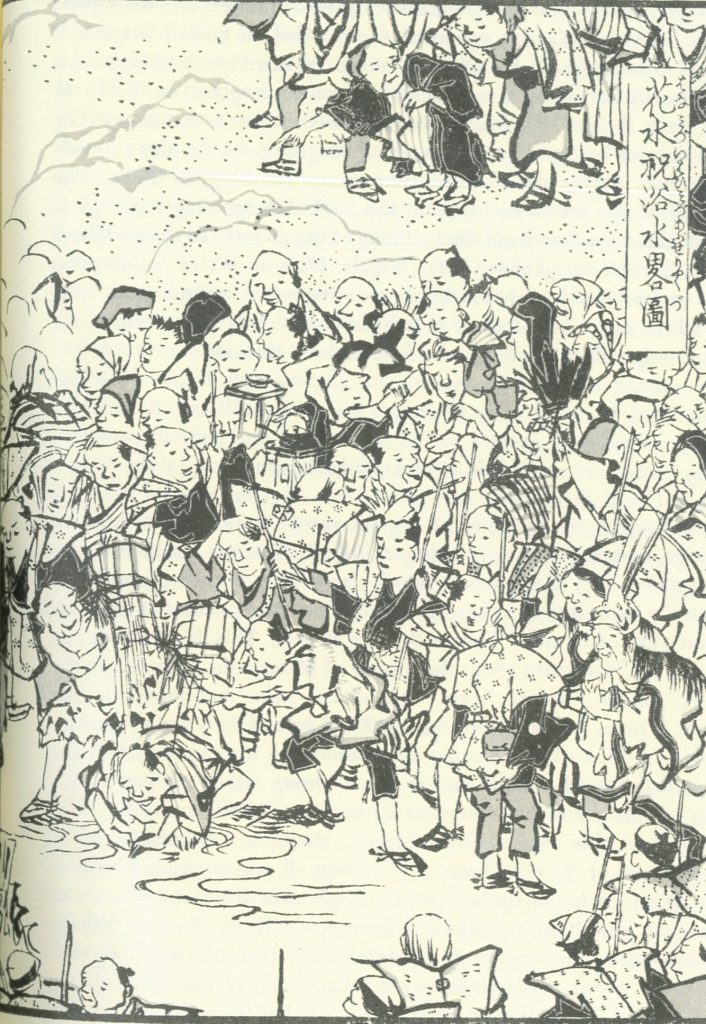
A “Strange Festival” with a long history
The history of the Hanamizu Iwai “Blossom-Water Festival” is closely tied to the history of Uonuma City, specifically to the district of Horinouchi. According to Bokushi Suzuki, the author of Snow Country Tales, at one time Horinouchi was made up of 29 separate villages, one of which was the village of Ugachi, which was said to be the birthplace of Hanamizu Iwai over 700 years ago. From the Muromachi period of the 14th century onwards, it became increasingly common for bridegrooms in samurai families to be dunked in water in order to wish for the birth of healthy children. Soon after, this custom began to be adopted by the common folk as well. In the YUKIGUNI area, this ceremony took on a special religious significance, as Shinto blessings were recited and villagers took on the roles of Shinto deities Sarutahiko and Uzume. It seems that by Bokushi’s time in the 19th century the Hanamizu Iwai Festival had established its reputation, but soon after in 1874 all such water-dunking festivals were outlawed by the government.
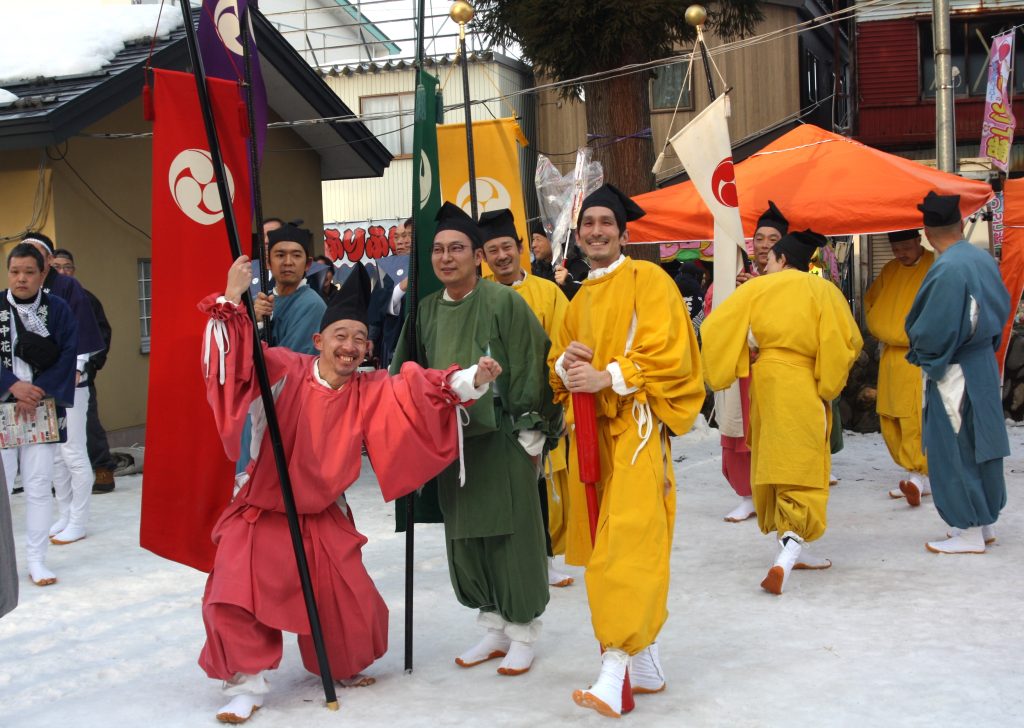
Hanamizu Iwai in the present day
In 1988, the amalgamated town of Horinouchi (currently a part of Uonuma City) decided to reclaim this part of their culture by restarting the Hanamizu Iwai Festival, and it has been held here ever since. Unlike in its original incarnation, the festival now accepts volunteers, both among bridegrooms and festival performers- including international residents! Previously, the festival involved a large procession that visited each groom’s family house by house, where large feasts would be held. These days, the festival is held in the area around the Horinouchi Hachimangu Shrine. In order to wish for a healthy child, a newlywed groom will pray at this shrine while mostly naked in the snow, then all of the grooms are paraded around the festival ground. On their return they light a ceremonial fire, and then a conch shell will blow to signal each aramuko, or bridegroom, to come to the dais. The festival culminates in the aramuko getting buckets of freezing water poured all over them, and concludes with a small fireworks display.
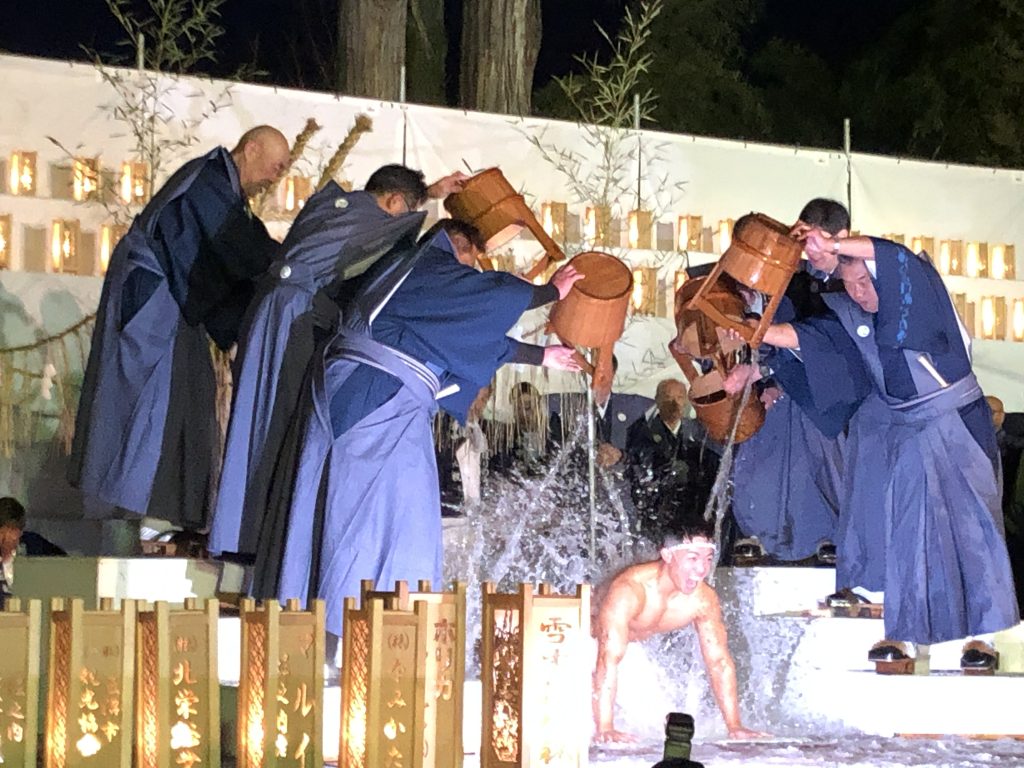
This quaint local festival gets approximately 60-70 participants a year, while the onlookers who come to watch the ritual, grab some festival snacks, see performances, and pray at the shrine can number close to one thousand. You can see many of the participants wearing ritual garb known as “kamishimo,” which has been used since the days of the old Hanamizu Iwai festival. There are food stalls open from the afternoon until the conclusion of the festivities. Hanamizu Iwai is the best time to see what the city of Uonuma has to offer!
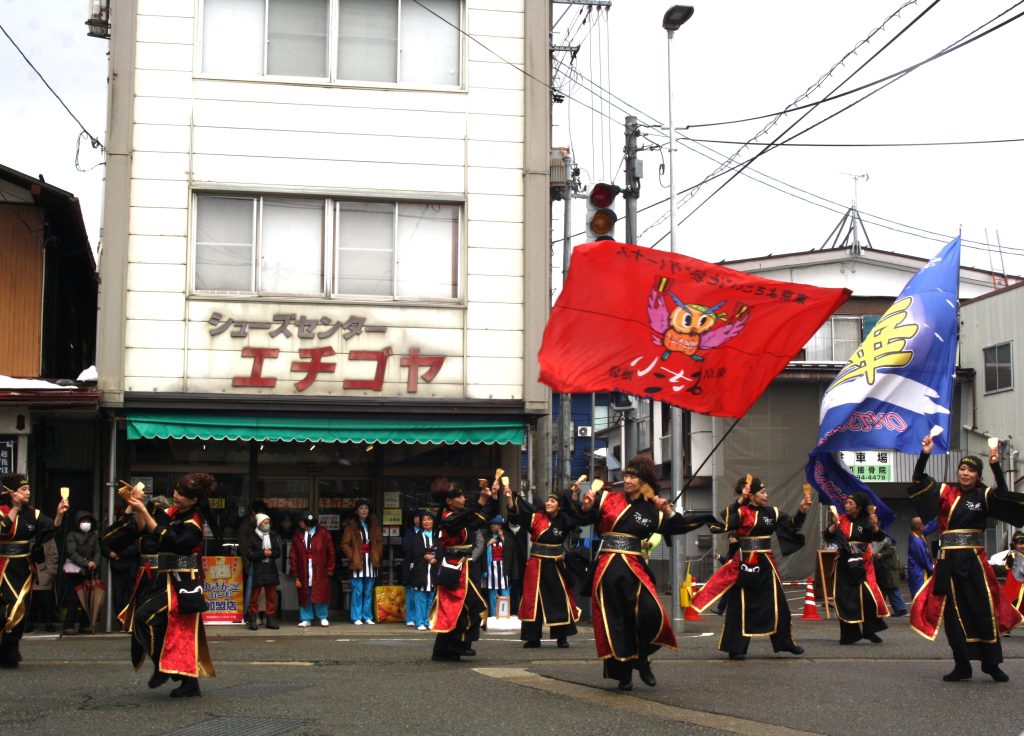
Taiko Drumming and Yosakoi Dancing
If you are an early arrival to the festival, you will be able to see a taiko drum performance in the afternoon. A more recent addition to the festival are Yosakoi dance performances! Yosakoi is a relatively new form of Japanese dance that emphasizes more freedom of movement and utilizes wooden clappers called “naruko.” Yosakoi groups come from as far as Tokyo, and participate in the Hanamizu Iwai Festival along with local groups. Yosakoi is especially popular in Kochi Prefecture and cities such as Sendai, but it is unique to see yosakoi in the snow in Uonuma! In fact, Yosakoi is now gaining popularity not just in Japan but all over the world.
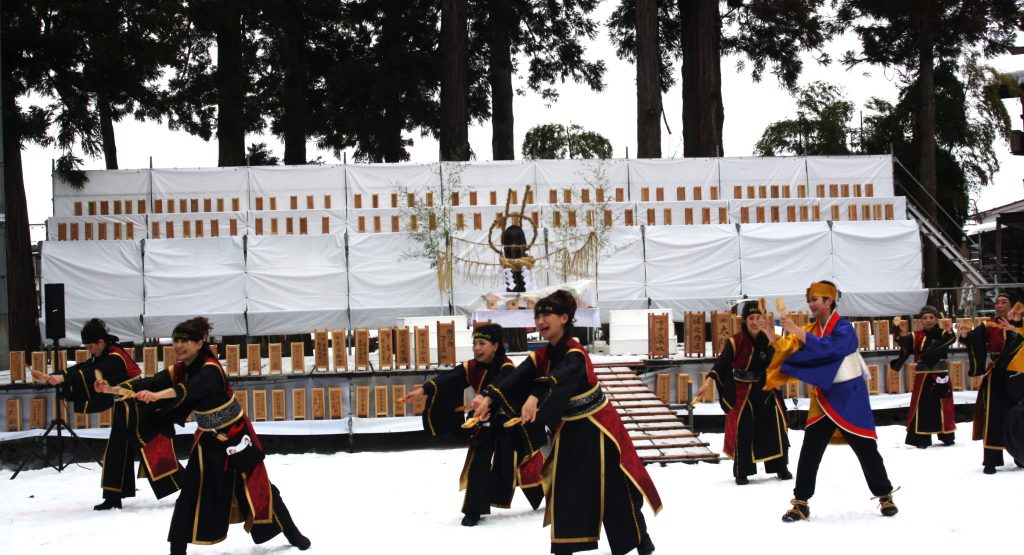
You can enjoy yosakoi both at the shopping street as well as an encore performance at the Hachimangu Shrine. Each team sports unique and colorful garments. Participant sign ups typically start from November or December. If you want to see even more yosakoi in Snow Country, there are performances in Tokamachi City during their Matsudai Kannon Festival in summer. Click HERE to learn more about it.
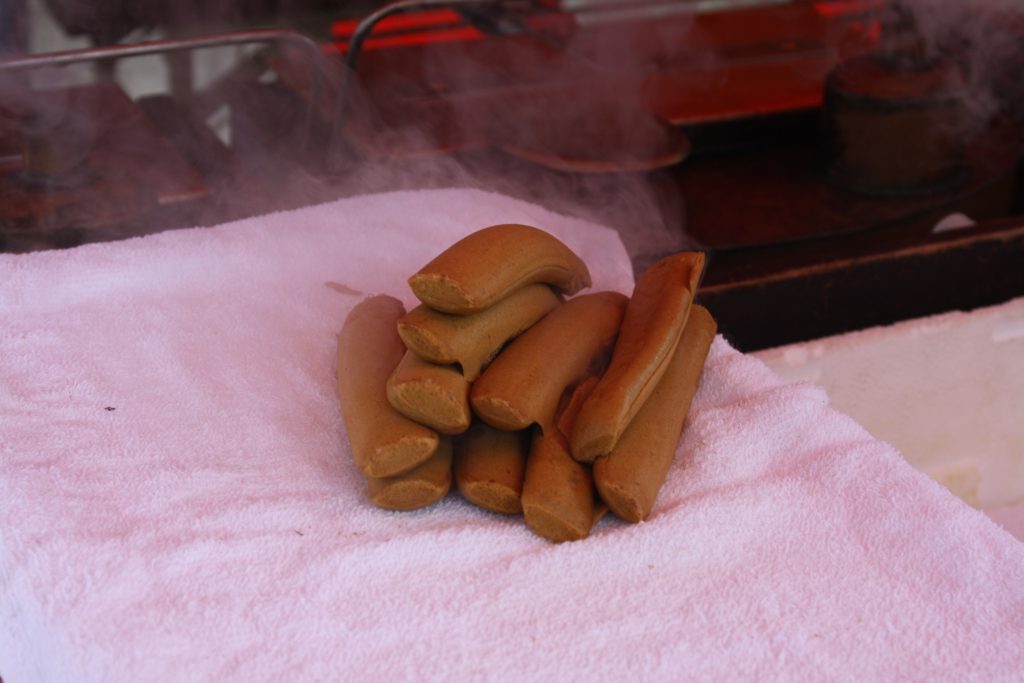
Local delicacies and souvenirs
One of the joys of any Japanese festival is all the interesting festival food! The Hanamizu Iwai Festival has a large variety of vendors, and travelers can enjoy everything from takoyaki and yakisoba, to regional favorites like kaijika, or sculpin preserved with sake, and popoyaki, a famous festival snack around Niigata, which are long, thin pancakes lightly flavored with brown sugar.
You will see many people buying special mochi-topped decorative branches called “haato eda,” which are decorative branches adorned with colorful mochi doves, meant to be used as an offering to ask for a fruitful year. Despite being made of mochi, these haato eda are not edible. However, edible mochi is thrown as part of the celebration: Children are brought to the front by the stage to catch as many mochi as they can, but people of all ages are also able to catch and enjoy some delicious mochi. In addition, freshly made shinko mochi is available at food stalls around the Hachimangu Shrine.
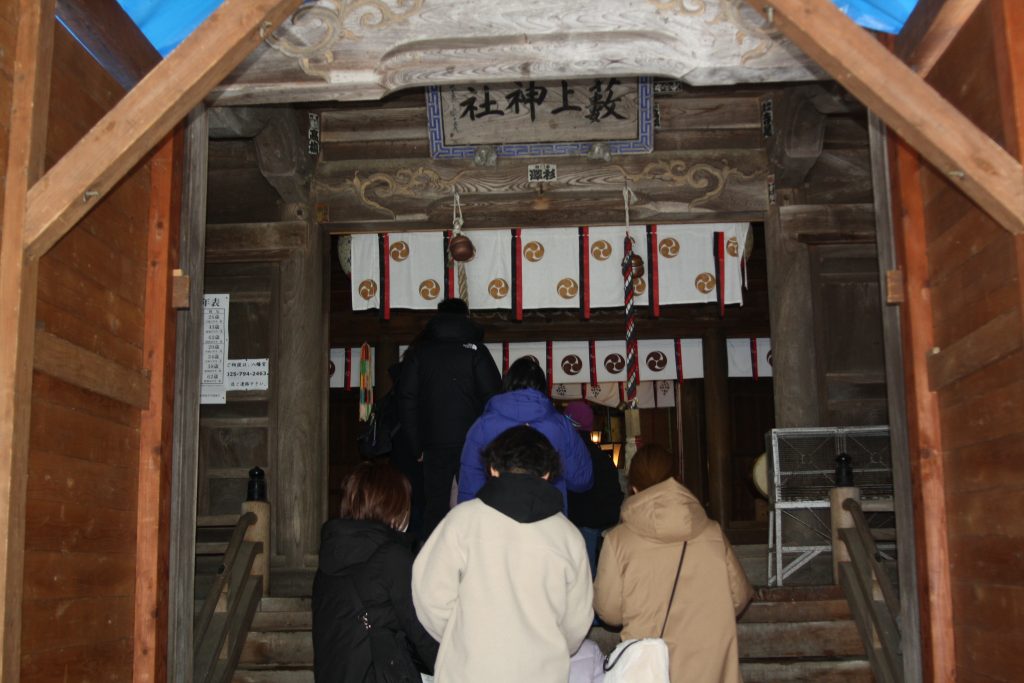
Getting to the festival
From Echigo-Horinouchi station, it is only a short walk to the Hachimangu Shrine and adjoining shopping street. These days, the Hanamizu Iwai Festival takes place on the same day as the Uonuma Kokusai Yukigassen, an international snowball fighting competition in nearby Koide district. It is common for the festival to become quite crowded from late afternoon or early evening as people go from one festival to the other. Uonuma City is also known for takigumo, their so-called “cloud waterfalls” that sometimes appear up in the mountains. Click HERE for more information.
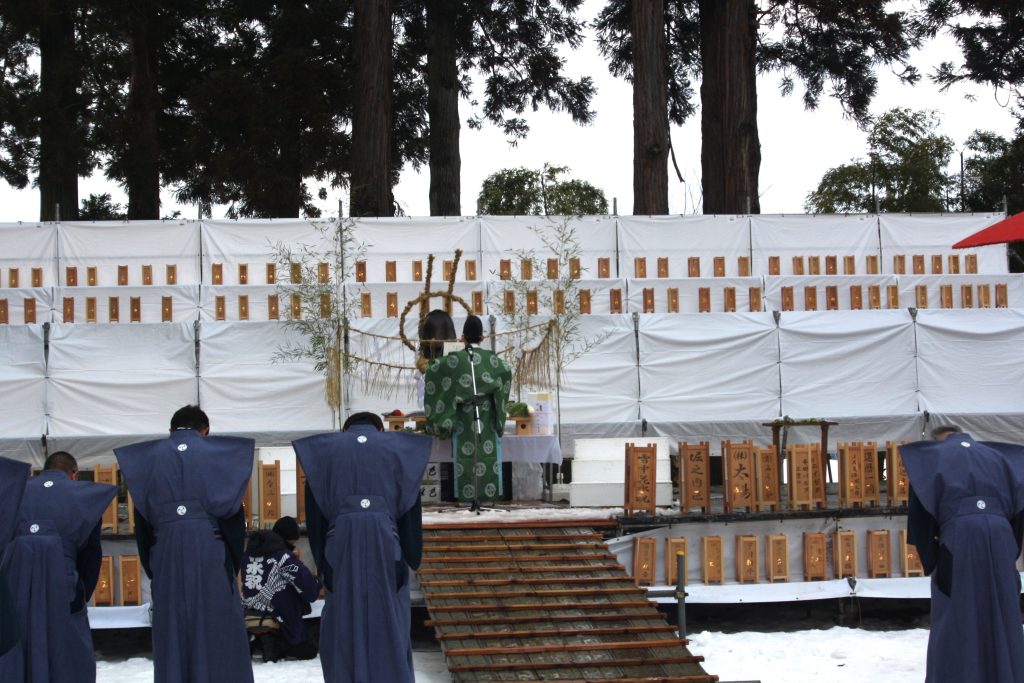
Information for Travelers
Hanamizu Iwai Festival held on February 11th yearly.
Address: 3429-1 Horinouchi, Uonuma City, Niigata Prefecture 949-7413 (Horinouchi Hachimangu Shrine)
Festival starts around 11 a.m. and finishes at 6:30 p.m.
15 minute walk from Echigo-Horinouchi station on the Joetsu Line

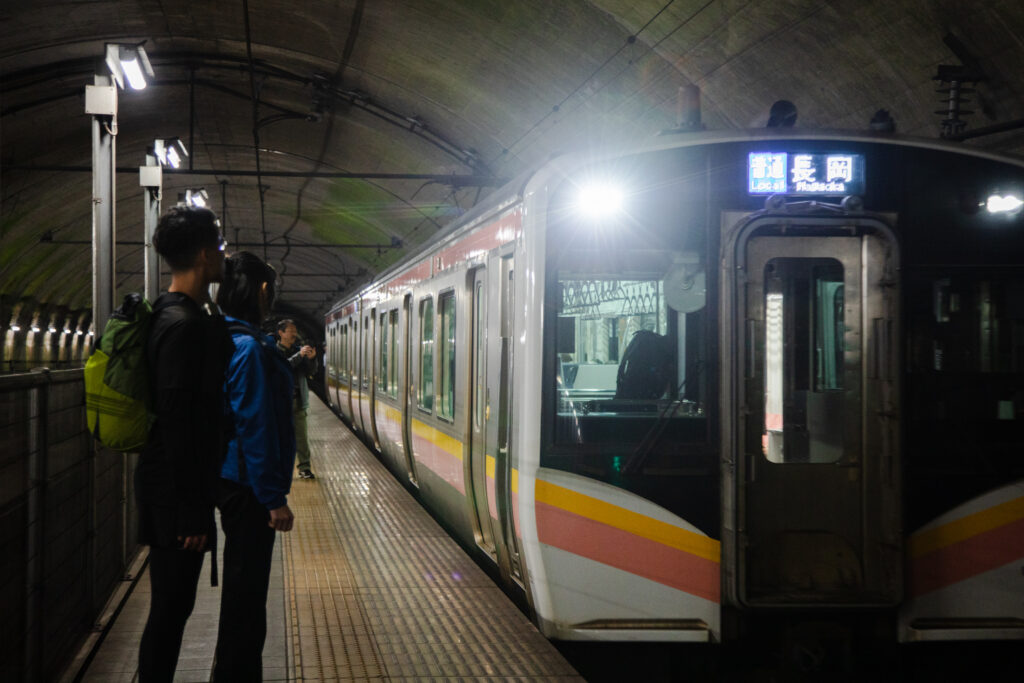
-1024x626-2.jpg)
